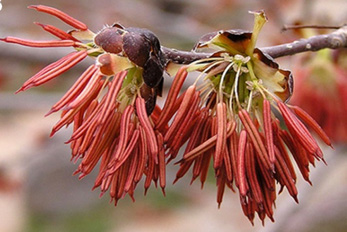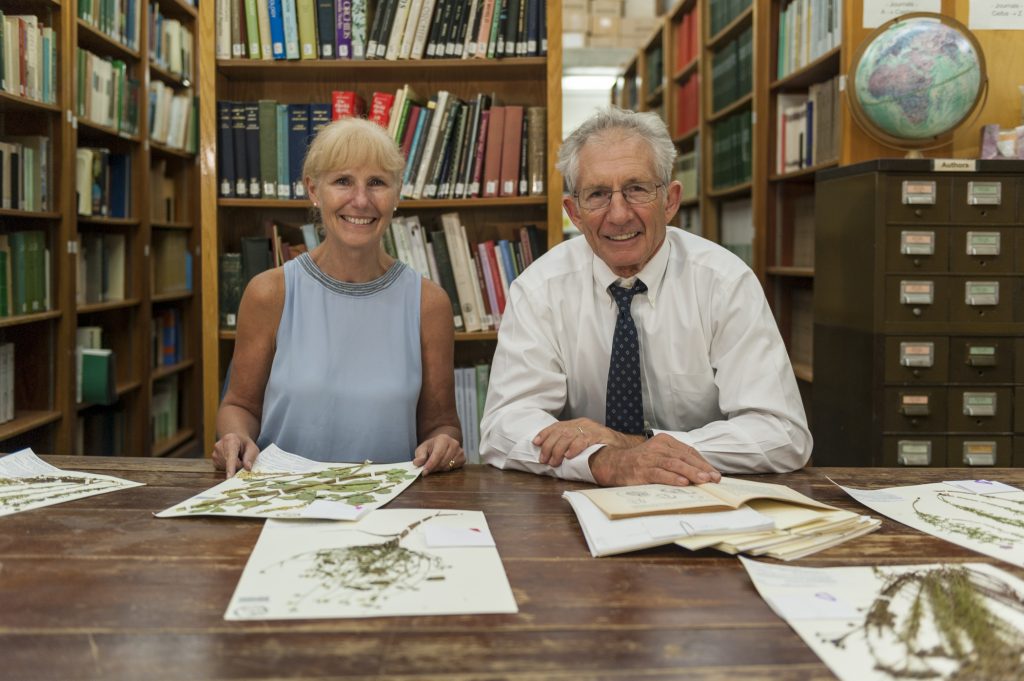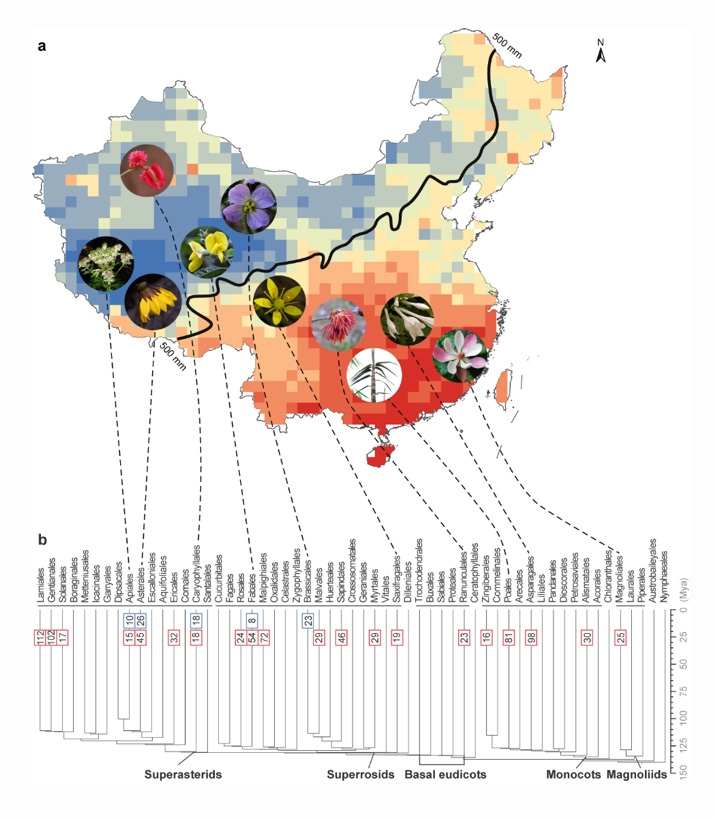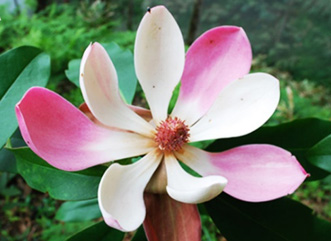An international team of scientists has mapped the evolutionary relationships between China’s 30,000 flowering plant species, uncovering a distinct regional pattern in biodiversity. Eastern China is a floral “museum” with a rich array of ancient lineages and distant relatives while the western provinces are an evolutionary “cradle” for newer and more closely related species.
The findings highlight the need for more conservation efforts in densely populated eastern China, home to many threatened plant species and the country’s top biodiversity hotspots.
Better connecting eastern China’s nature reserves and parks, currently fragmented by urbanization and provincial borders, would help conserve plant lineages and the animals that depend on them, said Pam Soltis, one of the study’s senior authors and a distinguished professor and curator at the Florida Museum of Natural History.

Figure by Li-Min Lu et al. in Nature
“Conservation is not just about protecting species numbers but also protecting evolutionary diversity and processes,” said Soltis, who is also the director of the University of Florida Biodiversity Institute. “Focusing just on how many species are in an area, rather than how different they are from one another genealogically, could lead to conservation practices that miss important sections of the Tree of Life. Both are key measures of biodiversity. This study helps spotlight what is missing in China’s current protective strategies.”
In a study led by Li-Min Lu of the Chinese Academy of Sciences, researchers produced the first dated phylogeny – a family tree of organisms showing when new species appeared – for all of China’s flowering plant species, or angiosperms, and mapped their distributions using 1.4 million museum specimen records.
The team published its results today in the online edition of Nature. Co-senior authors are Zhi-Duan Chen of the Chinese Academy of Sciences, Jian-Hua Li of Hope College and Pam Soltis and Doug Soltis of the Florida Museum and UF.
The researchers found that about 66 percent of angiosperm genera in China did not originate until the early Miocene, about 23 million years ago. Mean species divergence times – when species first appeared – were 22-25 million years ago in the East and 15-19 million years ago in the West.
Over the past 30 million years, herbaceous plants – those without a woody stem – diversified much more quickly than woody plants such as shrubs, trees and vines.
China is home to about 10 percent of the world’s flowering plant species, outstripping the number of angiosperm species in the U.S. by more than 3.5-fold. Its varied geography and climate contribute to its wealth of biodiversity. The hills, lowlands and plains in the warmer, more tropical East gradually rise to the West’s rugged mountains, deserts and the Qinghai-Tibetan Plateau, the highest tableland in the world.
Unlike North America and Europe, China did not undergo the dramatic ecological turnover driven by glaciation in the ice age about 2.58 million to 11,700 years ago, allowing ancient plant lineages to persist in the East and newer lineages to be folded into ever-diversifying plant communities.
“China didn’t experience that big type of cataclysmic event,” said Doug Soltis, a distinguished professor and curator at the Florida Museum and professor in the UF department of biology. “That allowed it to be more of a museum than other parts of the Northern Hemisphere.”

Photo courtesy of Zhi-Duan Chen
The uplift of the Qinghai-Tibetan Plateau in the West, caused by India’s collision with Eurasia, spurred the region’s evolutionary explosion of new species by opening up myriad new habitats and creating a cool, arid western climate. The West became a cradle for newer herbaceous plants while the East remained a museum for older herbaceous plants and both a museum and a cradle for woody plants.
The researchers used species distribution data to map China’s areas of genetic richness, pinpointing several eastern provinces as home to the country’s greatest genetic diversity of flowering plants: Guangdong, Guanxi, Guizhou, Hainan and Yunnan. Conservation in the East, however, is carried out on a much smaller, more fragmented scale than in the sparsely populated West, where large swaths of land are preserved.
“It’s good to preserve these areas with recent radiations of new species, but what’s missing is extensive protection of these older eastern lineages,” Doug Soltis said. “This study helps us better see the discrepancies between where conservation areas are and where the diversity actually is located. Scientists didn’t realize the importance of protecting genetic diversity – and not just rare species – until the last few decades, but we couldn’t measure this type of diversity in a rigorous way until the last 10-15 years.”

Florida Museum photo by Kristen Grace
The researchers pointed to the value of museum collections in enabling this country-scale study of thousands of plant species spanning millions of years of evolution. Each plant specimen, painstakingly collected and preserved in herbaria over the past century and digitized, contributed to an enormous dataset that offered a detailed snapshot of China’s diversity of flowering plants.
“How do you do something like this without relying on millions of collections?” Pam Soltis said. “Without all those data, it’s impossible. The question of how communities of organisms came together and changed over time is unanswered for nearly all groups. Pinning down the history of 30,000 species – nearly 10 percent of the planet’s flowering plant life – is a major leap forward.”
Lead author Lu said the study provides a model for many other landscape-scale studies of biodiversity.
“We feel that the importance of this study extends beyond plant biology to other lineages of organisms and other regions of Earth,” she said. “Both the approaches used and the results are also of broad interest to scientists and the public who are concerned with the conservation of biodiversity.”
The research was supported by the National Key Basic Research Program of China, the National Natural Science Foundation of China, the Chinese Academy of Sciences International Institution Development Program, the U.S. National Science Foundation, iDigBio, U.S.-China Dimensions of Biodiversity Program and the Priority Academic Program Development of Jiangsu Higher Education Institutions.
Sources: Pam Soltis, psoltis@flmnh.ufl.edu, 352-273-1964;
Doug Soltis, dsoltis@ufl.edu, 352-273-1963;
Li-Min Lu, liminlu@ibcas.ac.cn;
Zhi-Duan Chen, zhiduan@ibcas.ac.cn, +86 106 283 6434
Learn more about the Laboratory of Molecular Systematics and Evolutionary Genetics at the Florida Museum.


